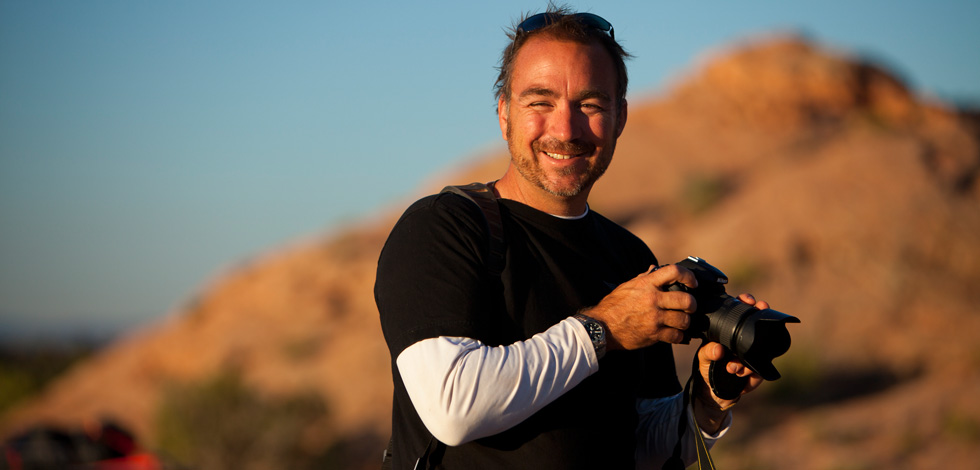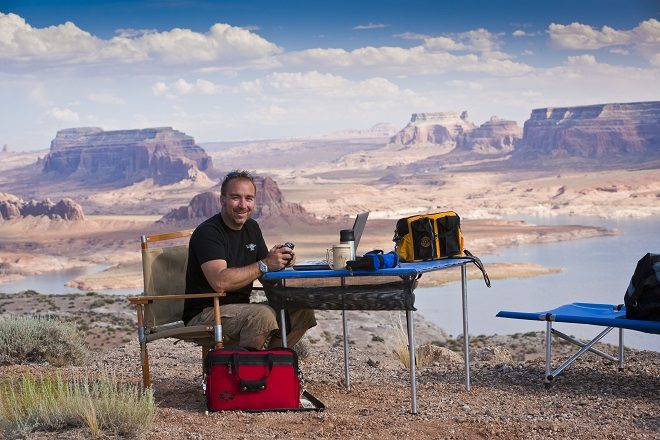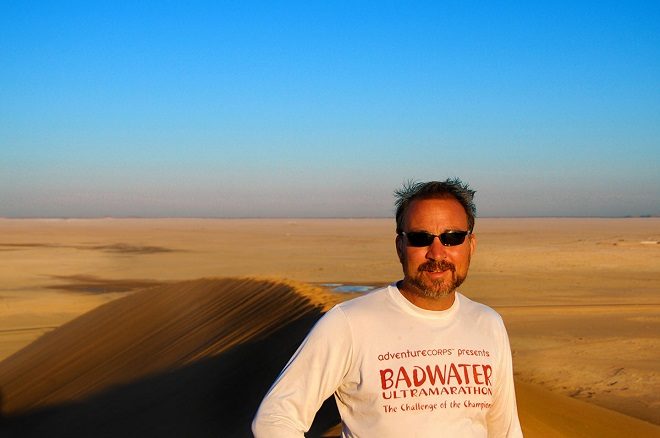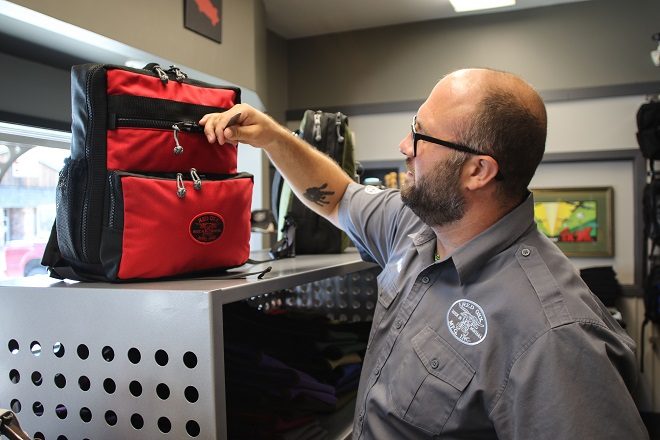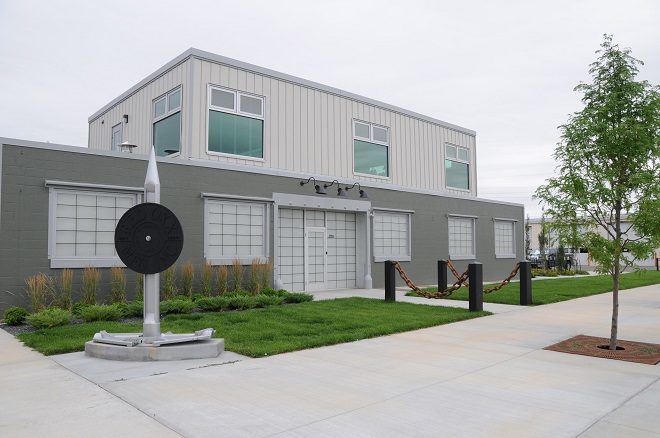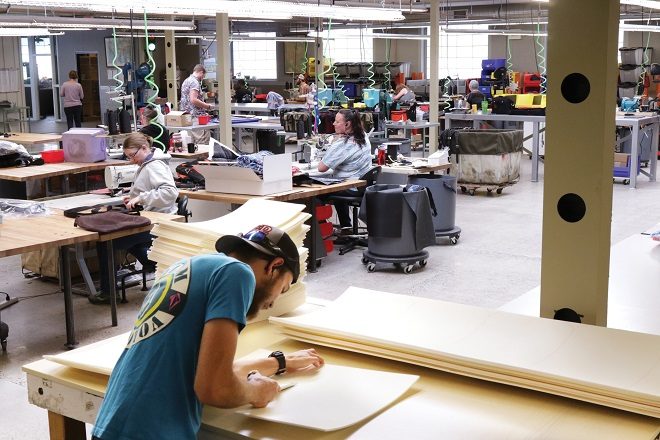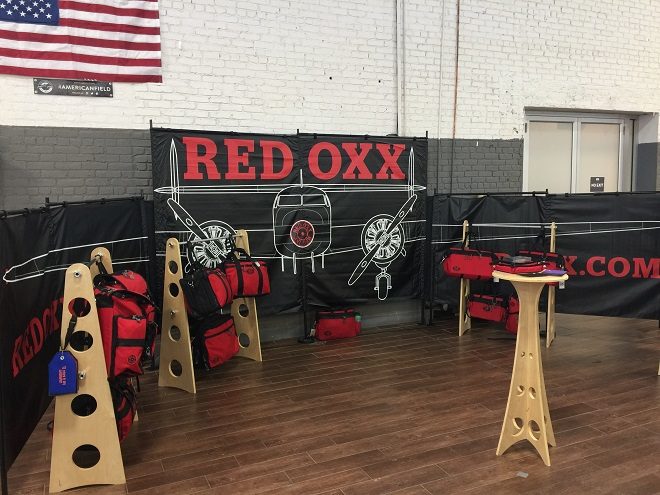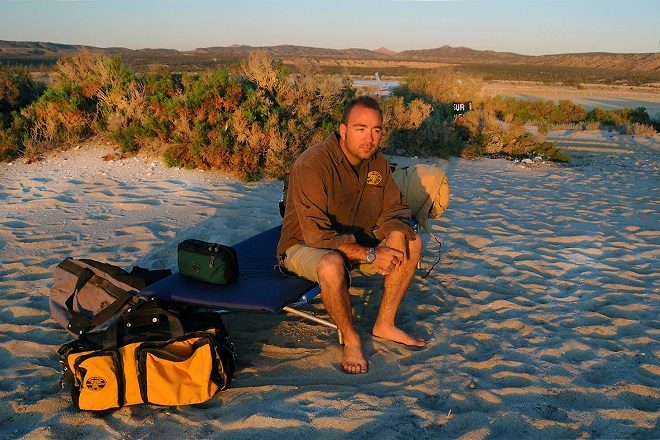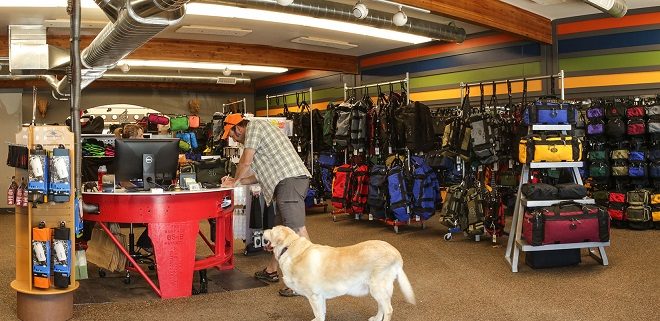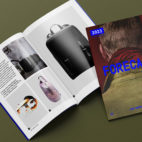Rigger to Red Oxx :: Jim Markel Interview
I imagine Jim Markel, CEO of Red Oxx, was the kind of stubborn, unrelenting kid that would remove the brakes on his downhill derby car to drop weight. If you told me Jim Markel snuck into the senior prom as a freshman to pick a bone with the neighborhood bully and slow dance with his girlfriend, I’d believe you. He’s the subject of a Norman Rockwell painting somewhere—I’m sure of it.
It’s of no surprise that a kid like Jim went on to become a rigger in the Marine corp, and would return to live the rest of his years hunting and fishing in big sky country. And what’s a man like Jim do when he’s constantly let down by crappy outdoor and adventure goods, you ask?
He makes his own, of course. Meet the face of Red Oxx.
So how long have you been in Billings?
I have been in and out of here since ’86 when I was in the military. I’d come here on leave and go hunting up in Jordan and eastern, north eastern Montana. The place just kind of drew me in as they say.
You were a rigger, correct?
Correct, I was a parachute rigger in the Marine corp.
Did you sew before that at all?
A little bit. I messed around with some stuff my dad had. He was also a Marine, and he was a rigger and a HALO instructor. Since I was old enough to walk, I’ve spent my time around nylon and parachutes. I made backpacks, but not a lot. I made duffel bags. Back in those days, I’d make one or two things, and that’d be it for the year. I’d use them though—somewhere in my junk, I still have bags that I made, shoot, when I was 12? Now they hold tow straps and things like that, but yeah, that’s what I did in the Marine Corp.
My business partner, he was a Navy rigger. They spent most of their time in the rigger’s shop making stuff on the aircraft carriers. So he’s a way better rigger than I’ll ever be because he made all the holsters on the Navy pilots’ survival equipment. His ability to customize and make things is legendary. I’m more like, “Yeah, I can sew…I can make stuff…” but I don’t have his abilities. He was always getting challenged by officers coming to him: “I need to put my granola bar here and my pistol here. You know what I’m talking about.” Riggers always had a little side racket going.
And the riggers’ moto is, “I will be sure always.”
Exactly. “I will be sure, always.” If you’re not sure, you have to take it apart and repack it. Our inspection process. Our build process. All of it. So now, when I bring on new hires, I say, “You have to remember that somebody is getting an impression from this product. You’re making it. Would you spend your hard-earned money on it, if you knew that you cut a corner?” And they’ll say, “No.” So there you go. “Don’t let anything sloppy off your table…”
Everything we do is double stitched and finish taped. Our webbing handles go all the way around the bag to provide extra support. If you look at the webbing structure in your mind’s eye and pretend the Cordura disappeared, and imagine how much webbing would be floating in space, it’s almost enough that it’s like a cargo net around the load. This helps with dispersion and controlling the load, and that’s one of the things that makes the bags last.
And that’s obviously our brand: stuff that lasts outdoors. Adventuring. Traveling.
“Somebody is getting an impression from this product. You’re making it. Would you spend your hard-earned money on it, if you knew that you cut a corner?”
If you want to kind of keep it on why we exist—the gear that I was using for hunting just couldn’t stand up to any sort of continued use. 100-120 days of use in a year was just too much for the stuff that was coming out in the nineties as everything was being transitioned to offshore manufacturing. The initial quality was really poor, and I would argue that it hasn’t gotten much better. The look may be better, but overall, under real conditions and real living with it and using it, gear just falls apart.
The start of what we did was hunting stuff, because when you think about “What did I wear out and destroy?” it was gun cases. You reach into the back of your pickup truck and the case has been riding there for three hours in -10° weather. You go to pick up something out of the back of your pickup truck—and I’ve literally had other gear bags before I started making my own, just break. It was so cold that the poly or vinyl or whatever would become brittle, and it would just break. Between the gun cases that I was just flat out wearing out from using them, or duffel bags… That’s where the initial need for our products came from, because we were always out doing something.
I can go on about hunting and fishing all day, but… Are you specifically talking about the hardware?
The hardware, or zippers, or the construction, or the fabrics a lot of stuff is made from is subpar, and occasionally manufacturers will splurge a little and use a decent fabric, but most companies are going to cut a corner somewhere whether it’s the zipper or the hardware.
Why do you use 10mm Vislon zippers over coils?
With the Vislons, they lock in… [Jim uses his middle knuckles to demonstrate the locking integrity of the zipper teeth]. You can put them back together if they do pop loose… Vislons cost more, they’re harder to put into the bag, and most companies avoid them. They really are a bear, but we embrace them because it’s the function and durability that’s most important. Not how quickly we can build the product in our factory.
Coming from the apparel world, I’ve only seen Vislons on waterproof jackets, so seeing bulky 10mm Vislons on bags is jarring.
That comes from me being a freaking jarhead Marine. When I want something out of that bag and it’s -10° below, I’m not going to mess around and warm it up in the cab. I just grab the bag and yank the zippers open, get what I want, zip it closed, throw a dead deer on top of it, and drive home. Coil zippers are not going to stand up to that. I’ve been known to hold my bags by the zipper pulls and do ugly stuff to them, and the Vislons last. Pack it, pack it, pack it, and then put your knee into it, and zip it shut. I’m not saying they’re indestructible, but they’re very, very durable. If you’re a hardcore user you’ll appreciate our gear. You’ll be like, “Damn—“
I’m not saying it will never break, but it’s not like other products.
Back when we were just getting started, I asked myself what the competition was doing. “What are they using on their bags?” And then, “Why are we using these huge zippers?” Because we parachute-riggered it, we had to overdo it. When we started comparing ourselves to the competition, we had to let our own style—like you said, shocking, jarring, big honking hardware—we let that become our look and our house style. That’s kind of how it really developed. It was use first, and then not wanting to chase the other guys. We wanted to create our own silhouette and profile.
I look sometimes to the European luxury brands not so much for what fashion models are using them or whatever, but how they stay true to themselves. They establish a craftsman culture at the factory. They have a look and a feel for the brand, and they create their own trend and live it. We’re not for everybody. We’re not for the ultra-light guys. You want hyper light Cuben Fiber blah-blah-blah? I’m never going to sell to those guys, and nor should I try to.
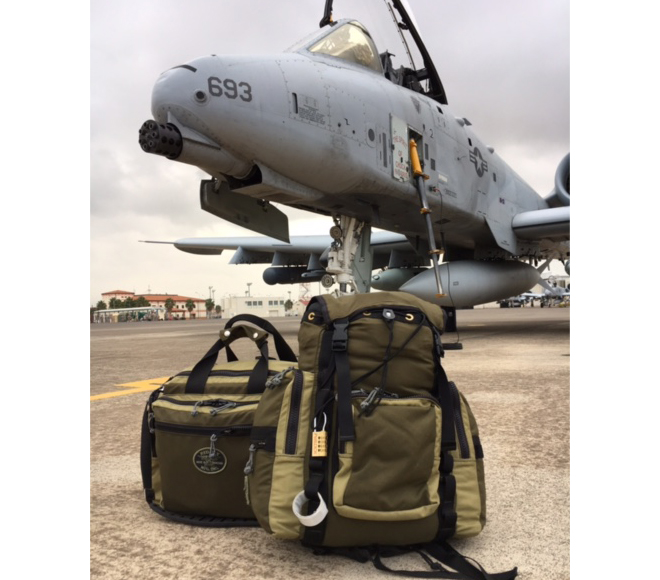
You say that you look to the European brands in deciding who they were going to be—their identities. Do you feel like you’ve accomplished that?
Yeah, I think. We’ve been in business long enough that we’ve been in eight different factories, and we’ve finally built what I call the ultimate factory for us. [fittingly referred to as Factory #8]. That craftsman culture is now firmly established within the culture of the people who work here, and I think nearly everybody has actually worked in the factory at one point.
How many employees do you have?
28 right now, plus a ton of subcontracting, but in-house we have 28 on payroll.
One of the cooler things I came across on your webpage was everyone’s little bio and their picture… I want to talk to you about that company culture a bit. What’s it like? How have you gone about creating that?
Again, I kind of look to Europe. How have people who have made things for generations and generations sustained a brand? You have to be proud of what you do. You have to believe that what you make is valuable; that your contribution to the world means something. For somebody like myself who is a maker, the act of creating and building things is a very self-satisfying feeling, you know? This thing was a chopped-up pile of fabric, and I put it together, and it became something that’s going to go on. So, looking for that maker’s mentality—you’re a creator, you’re a craftsperson. That’s the first step.
“I look sometimes to the European luxury brands, how they stay true to themselves. They establish a craftsman culture at the factory.”
The other side of it is that most everyone who makes these products uses them in their everyday life. We’re all Montana people. You either like the outdoors or you don’t like Montana. They’re using our stuff themselves—it’s not a company where, like Rolls-Royce, how many people who work at their factory do you think drive a Rolls-Royce? I would argue zero. At Red Oxx, everyone lives that lifestyle.
We also have fun. Or we try to, and that’s a big part of it. We do collective lunches and events, and it’s a pretty cool environment. It’s a beautiful work space, too. We worked with the contractor and the architect to build a factory that, I think, is modern and yet pleasing to be in. It has good sound control, excellent lighting, and good work flow and efficiency so you don’t feel like you’re wasting your time. Have you ever gone and done something, and asked why you’re doing it, like, “This is stupid”? We tried to remove all the stupid aspects and make it more satisfying. You’re not doing crappy, cheap work here, you’re not doing stupid work, so it’s a thinking factory in some ways I guess. We’re continually improving.
Was it always Red Oxx, even before your dad first brought you on?
Yeah. Way back in the ’80s. It was: Red, and strong as an Oxx.
That’s where the namesake came from?
Yeah. Red is his favorite color…
Those days were interesting days at work. We did high volume back then. It was always tens of thousands of units and it was truly Red Oxx manufacturing. We were like any other manufacturer, but I looked to the future and didn’t see that as a viable thing with China coming online. A lot of my personal interests were not so much in the gym anymore either because I wanted to be out in the field. I still have a hard time working out even a couple days a week because given half a chance to run and play outside—I’m going to go run and play outside.
So, pardon my asking, but do you have a business background? The foresight that you had to have to determine that economic trends were going one direction, being uncomfortable with the way China was positioning themselves, and to depart from what you were doing and move toward something new… The amount of insight, the decision-making, and then actually being able to pull off a change of course like that… Most people would be dead in the water.
You know…no. I joined the Marine Corp. at 17. I’ve always been doing stuff—trying to make money. As a kid, my old man cut me off at five, so I started mowing lawns, I had paper routes, I had a car washing business. By the time I was 12, I had thousands of dollars in the bank. I bought my first motorcycle at 13, not even old enough to drive. I bought my first vehicle… the old man was just like… He couldn’t stop me because he never gave me anything! He said, “You want a car? Go buy one!” So I did.
I remember, I pushed that motorcycle home, and he just started shaking his head. He goes, “Where’d you get that?” I said, “I bought it!” It was just instilled in me, that self-dependent thing. I’ve always worked for myself.
I was never a very good student either. I did lousy in school. I tried to go to college, I tried to go to high school, I just couldn’t do it. I can’t sit there for that long. I envy people who are able to get a degree in anything…
Did you graduate high school?
No, not with my class, I left when I was 17! I didn’t even finish my senior year!
So you’re CEO of a company… [Jim got a kick out of my disbelief and laughed] … and you don’t have a high school diploma?
Well I got one, yeah, I tested out.
That’s nuts, man, how that all worked out.
Yeah, it’s funny. I went and guest-taught at an entrepreneur class up in Bozeman and afterwards the teacher asked me, “What did you think?” I said, “One, maybe two people out of all your classes are entrepreneurs.” She said, “You’re exactly right.” It was really weird. She could recognize the certain kind of behavior, the certain kind of mindset, that makes a true entrepreneur. It really can’t be taught. It’s almost made in another way, or people are born that way and then shaped by the world around them. I would argue it has a lot to do with risk tolerance, wanting to control the situation in some way—that’s why I like to row the boat instead of fish. It’s just an intrinsic thing in who I am. Anyway, I love business.
“You have to be proud of what you do. You have to believe that what you make is valuable; that your contribution to the world means something.”
One big take-away from my military experience was not the skills of being a parachute rigger, it was the ability to recognize that if 99% of people are going one way, you want to be the 1% going the other way. That’s how you avoid ambush, because you do something that they’re not expecting. You’re jumping into the ocean in the middle of the night and then swimming ashore. Who does that? Well Navy SEALs and Marine Recon, that’s who does that shit. They don’t expect you to come this way—the hard way. “Oh there’s a hundred miles of desert. Nobody can cross that desert.” Guess what? We’re crossing that desert. We’ll sleep all day and move all night. That sort of asymmetrical mindset always appealed to me.
Who’s doing product development over there?
It’s collaborative. Sometimes I come up with an idea. Sometimes customers come up with an idea. A lot of times, the products come from inside the company. We have crazy contests where we invent products and everybody votes on them, and last year we said we’ll make 50 of these as Christmas presents for the staff to give to their families, and they became my initial test group for the product.
The Tool Roll you folks had as a contest piece, and ended up going to product with…that’s awesome.
When I saw that in the group, I thought no way. Here’s where the owner got it totally wrong. I personally thought, there’s no way this is a viable product. I also thought, who the hell would use it, and then there’s no way it’s going to win the contest. Sure as hell, it wins the contest. We put it out as a product and it’s become a solid seller. I mean solid. I wouldn’t call it a runaway launch, but it’s been steady. Every week, three or four of them, and I shake my head.
What’s funny is that I recently traveled with it: I took it to Guatemala, I put all my stuff in it, and I went down for like a week. Oh man, it’s freaking awesome! If you’ve got to run and gun on a trip, especially a tropical country, it’s all you need. It’s super organized. I felt weird not having my typical ruck and secondary bag, but I thought, “I’ll try this,” and it was awesome. I like having my packing cubes and being able to set those out on the counter and leaving all your stuff in the room. When this thing is all rolled up a certain way—bam! bam! bam! Roll it up and you’re good to go. It’s a cool bag. The crazy thing is now we have people coming in like that’s going to be a med kit or a kitchen kit.
What are your most in-demand products?
The PR5 has been a really solid seller since back in the day we won Gear of the Year with it in 2004, and it’s still a staple product for us. That whole product line—all four sizes. The PR5 (our fifth design) was the original one-bag carry bag, meant for the casual traveler.
Then we started getting a lot of people interested in business travel, so the Air Boss became a big seller, and it’s still a big product for us as well. We kind of crossed the line then from adventure traveler to business traveler, but still more like casual business traveler.
Another big one is the Sky Train, that’s a big seller for us. It’s a one-bag travel piece as well.
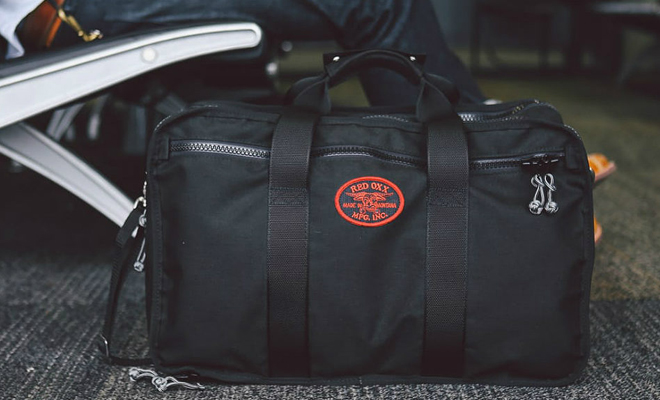
Photo via Gear Moose
What does Red Oxx stand for if you had to boil it down for us?
Well I think about our mission statement: We build power and mobility by building the best bags on the planet. That’s our original mission statement. What do we mean by power? We mean the strength to load that thing down and go anywhere you want in the world. Mobility? That’s what it means, anywhere in the world, in any condition, and for an extended time. Beat the hell out of it and keep living out of it. That’s really what we stand for. Really use it. Takt time.
We’ve done some computer modeling. Some of our bags get used 87 days a year. For example, our little Gator Bag has a high takt time. That means we’re in our customers’ hands as much as possible, which is what we want. I don’t want to just sell product—I want people to live with our product.
You have a lot of really fanatic customers, like, really fanatic—truly loyal. How did that start?
That behavior was recognized quite early, and I think it boils down to the balance we’ve struck between quality and design and usability. We all play that as product makers. There’s something about our designs and we’ve established that it’s okay to be a little overbuilt. When push comes to shove—we get to shoving. Our stuff lasts. Customers respect that. We won’t let them down on the other side of the world; there’s the mobility again. We always try to do the absolute right thing, whether that’s sourcing the materials, the way we build it… There are people who look at something and see it from 10,000 feet and then there are people who really get inside the product and they look at every seam and every stitch—and those people go, “Holy cow! They really didn’t cut any corners.” That is baked in. You can’t separate those aspects of the product design, the build, or the brand—it’s all intrinsic.
In line with your fanatic customers, can you share a story or some customer feedback that really verified what you’re doing?
Back at the beginning of the Internet age, when we finally got the review function on the website—everybody thinks that that’s been around forever, but we were online before we had that feature on the website. So reading those, the one thing that really stuck out was our warranty: no matter what happens, we take care of people. Sometimes bad things happen to our customers. They’re coming from a bad place and we provide something right in their life, which, in a lot of ways, is lacking in the world. Communicating that is really a big part of what we do—we’re here for them because they’re here for us.
“I think it boils down to the balance we’ve struck between quality and design and usability.”
What validates what we’re doing is that our customers will go out, use the hell out of our products in all these extreme situations, and then they share the love. They write these great reviews and I like to think that we become a valuable part of their travel experience and their life. I really get a lot of satisfaction out of that; that they can rely on us to provide what they need.
Red Oxx Trivia: How many reviews does the Air Boss have on its product page?
In the world of carry, the brand of customer that might be most loyal to you are the one-bag travelers. Do you feel like that’s true from your perspective?
I would say that we have a big following with people who get a lot of time in the airplane. Again, back to takt time. The experienced one-bag traveler, or the one-and-one-half traveler, who recognizes that they need a certain kind of kit that can stand up to the use and abuse that they put their stuff through, well they fall right into the sweet spot with us. Their days of travel are higher than the average person, so they recognize that under normal use and normal wear and tear an inferior product will fail on them, whereas something like a Red Oxx bag is designed for that.
“I don’t want to just sell product—I want people to live with our product.”
Sometimes people say, “Well, it’s a little robust in some ways,” or like, “Man, it’s a little overbuilt.” So I joke and say, “Well there’s no such thing as overbuilt, because the minute something fails on you, it was underbuilt.” And if it does happen to ever get damaged, we’ll fix it. Not a lot of people offer that warranty. There’s a couple here and there, but I like the fact that we don’t ask any questions, we just take care of you.
Do you charge customers for user error?
No.
We both took a few seconds to sink in. No questions asked. No charge.
We’ve heard some stories though. Sometimes those become awesome marketing stories.
Jim shared a story about a customer who’d been in a car accident which resulted in this gentleman’s car catching fire. He lost everything, including his luggage, save for a notebook-sized, charred corner of his Red Oxx bag. He turned the bag into warranty and Red Oxx replaced his bag. No questions asked. No charge.
One of the things I like to ask people is what they’re proud of, whether that’s a product or the business, or where you’re at now…so in terms of Red Oxx, what are you most proud of?
Wow, that’s an interesting question—I guess a simple answer would be that it’s working: my vision is working. I have to thank the people who buy our products and believe in us, not only how we do it, but also what we actually make. People can acknowledge that the business model is great, but easily say that they don’t like the product. The fact that there’s this acceptance…the whole concept of small batch manufacturing, super high quality, durability…yeah it costs a premium, but we’ll support you. That’s a validation of everything because I’m that customer myself. To me that validation, and that the business model continues to thrive, it allows me to do a lot of things. It allows me to hire people and train them in skills and help them build their personal pride—I’m very proud of that. It allows me to buy a couple old buildings down here in the industrial part of town and clean those up—I’m proud of that.
What are you currently using for Everyday Carry?
Well, right now I’m carrying a prototype bag—nothing official yet, but it’s called the Micro Manager.
Jim walked me through the bag. It’s a single strap with briefcase-style carry handles and a full clamshell opening that provides easy access to the main compartment’s tablet sleeve and organizational panel. It’s just the right size for everyday needs and support items while flying. Jim removes some of the contents of his bag, small glass pendants that he makes in his spare time and sends to friends in Guatemala, a few ceramic plates with glass inlay that he jokes will be used at a corporate dining event in the future, and his notebook and other personals.
Keep an eye out in September for the launch of the Micro Manager, and check out Red Oxx on Instagram and Facebook to get a closer look at their state-of-the-art factory.
Red Oxx Trivia answer: 754 as of July 26, 2017.





 Carry Awards
Carry Awards Insights
Insights Liking
Liking Projects
Projects Interviews
Interviews
